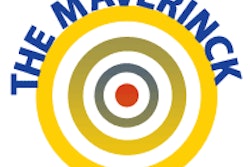
DUBAI - At least one large company is very interested in developing a 7-tesla clinical MRI system for use in large university hospitals in the near future, having been reassured about the powerful magnet's potential side effects on patients, a leading European expert said during a keynote lecture at Arab Health.
Dr. Siegfried Trattnig, the founder, professor, and chairman of the MR Center of Excellence (MRCE) in Vienna, believes there is a strong trend toward higher magnetic field strengths in MRI because of the higher signal-to-noise (SNR) ratio, higher spectral resolution, and stronger susceptibility effects compared with 1.5- and 3-tesla systems. Higher spatial resolution due to in vivo microscopy is another driving force.
"I believe 7 tesla is the top of it, and a further investment into 10 or 11 tesla does not make sense, because the costs are so high," he told a packed audience on Monday. "In my mind, 7 tesla is the best field strength for this clinically oriented research."
| Comparison of MRI systems | ||||
| Approximative comparison | 1-tesla | 1.5-tesla | 3-tesla | 7-tesla |
| Image SNR brain | 1 | 1.5 | 3 | 7 |
| Proton T1 (sec) | 1 | 1.1 | 1.3 | 1.8 |
| Chemical shift (ppm) (field-dependent) | 1 | 1.5 | 3 | 7 |
| BOLD contrast (%) in venules | 1 | 2-3 | 3-5 | 8-10 |
Trattnig admits there are serious drawbacks with 7-tesla MRI, particularly the radiofrequency energy that can lead to specific absorption rate problems. Other issues are susceptibility artifacts, chemical shift artifacts, stronger B1-inhomogeneity (hot spots), and MR compatibility and safety profiles. These issues are being addressed by the introduction of new coil designs (multiarray, receive, and transmit), pulse programming, 3D turbo-spin echo, and parallel reconstruction techniques.
"After many years, we have now studied more than 100 patients in our 7T and so far we haven't had any severe side effects," he said. "When you consider the same safety issues and regulations that you have at 3T, things also work nicely at 7T. The only difference we have seen is that some physiologic effects can be worse, like dizziness."
Trattnig, who is chair of the musculoskeletal study group of the International Society of MR in Medicine, outlined three core areas of interest for 7-tesla MRI: neuro imaging (hippocampus, multiple sclerosis lesions, and peripheral nerves), musculoskeletal (cartilage, triangular fibrocartilage, and peripheral nerves), and breast imaging.
"Very recent work on sodium imaging for breast cancer offers exciting possibilities, and sodium can provide information that we cannot get from any other technique noninvasively," he said. "Even more important is the follow-up after chemotherapy, because until now it takes two to three weeks to differentiate between the responder and the nonresponder."
| MRI systems worldwide | |
| Field strength | Percentage |
| 0.35-tesla | 9% |
| 1.5-tesla | 64% |
| 3-tesla | 27% |
| Total systems | 38,000 |
Furthermore, 31P MR spectroscopy (31P-MRS) can now give information about high-energy metabolites, and, combined with magnetization transfer techniques, enable measurement of metabolic activity at rest in vivo. This may be of benefit in other areas.
"Hepatic energy metabolism is of high interest as its alterations are indicative for inflammatory and neoplastic liver diseases as demonstrated in type 2 diabetes patients at 3T," Trattnig said, adding that invasive liver biopsy is the only method currently used to distinguish between nonalcoholic fatty liver disease and steatohepatitis.
Fast and localized 31P saturation transfer of the liver at 7 tesla is showing promise and might emerge as an alternative, he said. In liver imaging, it is very important to have close collaboration with hepatologists and clinicians and that radiologists consider all the information from laboratory results, blood counts, etc. Imaging is only one part of the diagnosis, he emphasized.
Overall, Trattnig is convinced that clinical end users can benefit from ultrahigh-field MRI in terms of morphology due to the higher spatial resolution of 7-tesla magnets, as well as the dynamic and static blood oxygenation level dependent (BOLD) contrast of functional MRI and susceptibility-weighted imaging and the clinical application of compositional and metabolic MR techniques, such as glycosaminoglycan-specific MR, proton and multinuclear MRI, and MRS.
"By using 7 tesla, we have a significant increase in the signal-to-noise ratio and the spectral resolution, and -- very important for clinical applications -- we have shorter scan times," said Trattnig, noting that over recent months, examination times in phosphorus MRI have been reduced from 60 minutes to 50 minutes, increasing the utility of the exam for larger clinical studies.
Founded in 2003, the MR Center of Excellence is a core research facility for the Medical University of Vienna, as well as being a reference site for the Magnetom 7-tesla system from Siemens Healthcare. It has received around 13.4 million euros in research grants and combines basic research and protocol development with a focus on applications in neuroscience, musculoskeletal research, oncology, and metabolism. Its goal is to validate the potential of ultrahigh-field MRI in clinical applications.
According to Trattnig, "7T MRI is the Formula One in MR and the Champions League in MR imaging. Siemens plays a very important role in this field. In this sense, industry and academic high-end research partnerships are a win-win situation, and thanks to this close collaboration with Siemens, we have considerably increased outcomes in our research projects."



















